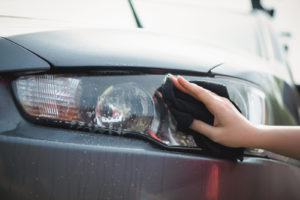About Hikari Led Headlight
A research experiment carried out in the UK in 1968 utilizing tungsten (non-halogen) lights discovered that visual skill is about 3% much better with selective yellow headlamps than with white among equal strength. Research study carried out in the Netherlands in 1976 concluded that yellow and white headlamps are comparable as relates to traffic safety, though yellow light causes less discomfort glare than white light. hikari led headlight.
Selective yellow headlamps are no longer typical, however are allowed in different countries throughout Europe [] along with in non-European areas such as South Korea, Japan and New Zealand. In Iceland, yellow headlamps are enabled and the lorry guidelines in Monaco still officially need selective yellow light from all cars' low beam and high beam headlamps, and fog lights if present.
The mandate for yellow headlamps was enacted to minimize motorist tiredness from pain glare. The requirement at first used to cars registered for roadway usage after April 1937, however was planned to encompass all lorries through retrofitting of selective yellow lights on older lorries, from the start of 1939. Later on stages of the implementation were interfered with in September 1939 by the outbreak of war. [] The French yellow-light mandate was based upon observations by the French Academy of Sciences in 1934, when the Academy tape-recorded that the selective yellow light was less spectacular than white light and that the light diffused less in fog than green or blue lights. [] Yellow light was acquired by dint of yellow glass for the headlight bulb or lens, a yellow coating on a colourless bulb, lens, or reflector, or a yellow filter in between the bulb and the lens.
The mandate was in impact until December 1992, so for lots of years yellow headlights aesthetically marked French-registered cars and trucks wherever they were seen, though some French chauffeurs are said to have actually changed to white headlamps in spite of the requirement for yellow ones. The requirement was criticised as a trade barrier in the car sector; French political leader Jean-Claude Martinez explained it as a protectionist law.
More normally, country-specific car technical guidelines in Europe were concerned as an expensive annoyance. In a study released in 1988, car manufacturers offered a variety of actions when asked what it cost to supply a cars and truck with yellow headlamps for France. General Motors and Lotus said there was no extra cost, Rover said the extra expense was limited, and Volkswagen stated yellow headlamps included 28 Deutsche Marks to the cost of automobile production - hikari led headlight.
An arrangement in EU Council Directive 91/663, released on 10 December 1991, specified white headlamps for all brand-new lorry type-approvals given by the EC after 1 January 1993 and specified that from that date EC (later EU) member states would not be permitted to decline entry of a lorry satisfying the lighting requirements included in the changed documentso France would no longer have the ability to refuse entry to a car with white headlights.
Fascination About Hikari Led Headlight
Though no longer needed in France, selective yellow headlamps remain legal there; the existing policy specifies that "every motor lorry need to be equipped, at the front, with 2 or 4 lights, creating in a forward direction selective yellow or white light allowing effective illumination of the roadway in the evening for a distance, in clear conditions, of 100 metres".
Fresnel and prism optics moulded into the headlamp lens refract (shift) parts of the light laterally and vertically to supply the required light circulation pattern. Most sealed-beam headlamps have click here for more info lens optics - hikari led headlight. Starting in the 1980s, headlamp reflectors started to evolve beyond the basic stamped steel parabola. The 1983 Austin Maestro was the very first car equipped with Lucas-Carello's homofocal reflectors, which consisted of parabolic areas of various focal length to improve the performance of light collection and circulation. Depending upon the advancement anchor tools and techniques in use, the reflector might be engineered from the start as a bespoke shape, or it might begin as a parabola standing in for the size and shape of the finished package. In the latter case, the whole surface location is modified so regarding produce specific sections of specifically computed, intricate contours.
Modern reflectors are frequently made of compression-moulded or injection moulded plastic, though glass and metal optic reflectors also exist. The reflective surface is vapour transferred aluminum, with a clear overcoating to avoid the very thin aluminium from oxidizing. Extremely tight tolerances must be kept in the style and production of complex-reflector headlamps.
Headlamps that satisfactorily brighten the road ahead without causing glare have actually long been looked for. The first options included resistance-type dimming circuits, which decreased the strength of the headlamps. This yielded to tilting reflectors, and later on to dual-filament bulbs with a high and a low beam. In a two-filament headlamp, there can only be one filament exactly at the centerpiece of the reflector.

